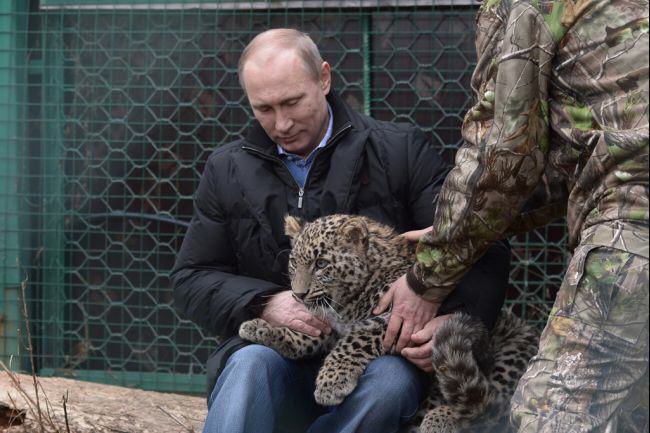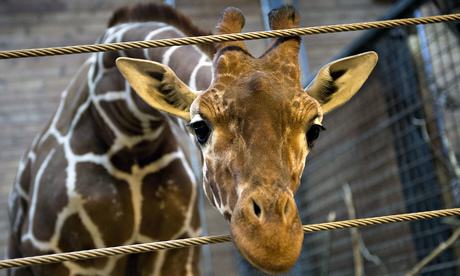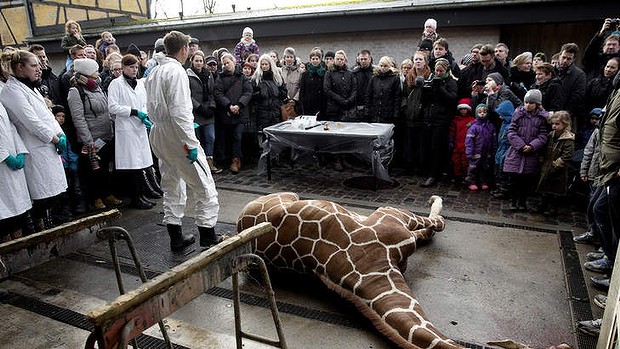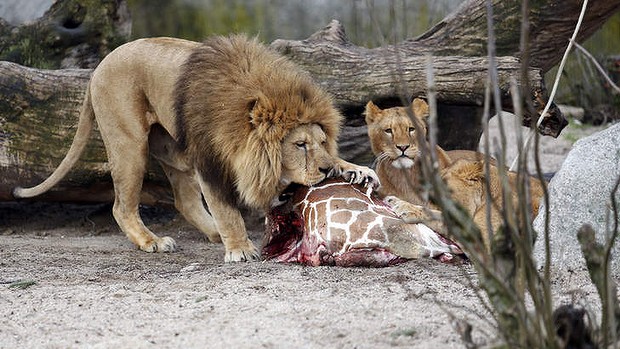“…Father believed that there was an animal even more dangerous than [humans], and one that was extremely common too: the redoubtable species Animalus anthropomorphicus, the animal as seen through human eyes. We’ve all met one, perhaps even owned one. It is an animal that is ‘cute’, ‘friendly’, ‘loving’, devoted’, ‘merry’, ‘understanding’….In [all these] cases, we look at an animal and see a mirror.” Life of Pi, Yann Martel.
Two recent news stories cast a revealing spotlight on our muddled thinking about animals.

First, in Sochi, president Vladimir Putin was photographed caressing a young Persian leopard cub at a newly-constructed breeding and rehabilitation center.
“The restoration of this endangered species will be part of the heritage of these games; the natural environment is much improved thanks to the Olympics,” said Mr. Putin.
Take that, environmental activists with all your whining about the construction of Olympic installations in a pristine wilderness!
One local activist was just sent to prison for three years for painting protest graffiti on the wall of a construction site. But there’s nothing to soften a tough politician’s image like cuddling a baby animal…especially a “charismatic” leopard or other big cat.
Next stop, Denmark, where the Copenhagen Zoo sparked animal activist ire – and an international media feeding frenzy – for euthanizing an 18-month-old giraffe named Marius.
As part of the European breeding program, the zoo must maintain genetic diversity in its limited space, so Marius was redundant.

The European Association of Zoos and Aquaria (EAZA) fully supported the Copenhagen Zoo’s decision. But many were horrified when Marius was lured to lower his graceful 2-meter-long neck with a piece of rye bread – his favorite snack – and then shot through the brain with a captive-bolt pistol.
Even more shocking to many was the zoo’s decision to chop dead Marius into large pieces in front of visiting children and their parents, before feeding him to the lions.
Bengt Holst, scientific director of the Copenhagen Zoo was admirably calm and intelligent as he cut through the media sensationalism with plain talk.
“I know the giraffe is a nice-looking animal, but I don’t think there would be such outrage if it had been an antelope, and I don’t think anyone would have lifted an eyebrow if it was a pig,” said Holst.

“There are 600 deer culled every year in a nature park north of Copenhagen, and no one gets upset. Humans have changed nature and we have a responsibility to maintain a balance.
“Humans kill and eat more than 50 billion animals a year. We have killed 5 giraffes since EAZA’s record-keeping began in 1828. Inbreeding can increase a population’s susceptibility to disease and other chronic conditions that can threaten the future survival of species under our care,” he explained patiently.
Nor did the zoo make any apologies for cutting Marius apart in front of children.
“It is not cruel, it is natural. Carnivores eat meat. If it was not the giraffe, it would have been a cow – what is the difference?
“Nature is not Disneyland where animals are only born but never die. In nature, animals must also die. Lions eat giraffes in nature. Why ‘protect’ children from reality?
“These children had the opportunity to see the wonder of the giraffe: for example, the huge heart that is needed to pump blood two metres up to their brain. They learned something in a way they would never learn from a book,” said Holst.

All very logical and scientific. But did he really like these animals, asked a journalist? “Of course I like these animals, that is why we are working so hard to protect their future. Sometimes you have to do things that are not so pleasant, but it is important to be intelligent about such things,” said Holst.
Not least interesting in this story, of course, is our own conflicting feelings about “charismatic animals”. Like it or not, Putin’s leopards (or, in this case, Danish lions) eat giraffes like Marius.
This reminds me of one of the most impressive scenes in the 2005 film The March of the Penguins when, after enduring incredible hardships, our heroes finally make it to the sea, only to be torn to bits by leopard seals.
For some reason, anti-seal-hunt activists never feature this footage on their protest websites?!
But let’s be honest: none of us are totally free of anthropomorphism. It takes a pretty cold-hearted person not to feel some sympathy for long-lashed, dewy-eyed Marius. Or for fluffy “baby” seals. Or for almost any animal staring wistfully into a camera lens. Especially when most of us now live in cities and rarely see a wild animal.
When overpopulated beavers flood our roads or raccoons move into our attics, however, it is remarkable how fast perceptions can change!











I am a greenlander inuk admirer who met Alan.Herscovici during one of his significant appearances, at that time in Fort Yukon, Alaska, where I had an interview with him on TV. He had an impact on my later work among my people. One of the participants was Mr. Finn Lynge who made a significant work in the European Parlament who passed away recently. I wish mr. Herscovici a long life – wish I had his e-mail.
Niels-Henrik Lynge, Nuuk Greenland.
I’m thinking Copenhagen Zoo is partly to blame here, and in fact any zoo that gives its animals human names for public consumption. You can’t decry our anthropomorphisation of animals at the same time as you call a giraffe “Marius”. Names are maybe OK for zoo animals with great longevity, like elephants, or those which there is no chance of them ever being culled, like giant pandas. But the minute you start naming every animal that is just part of a breeding program, and potentially food for other zoo inmates, you set yourself up for a fall.
In accordance with their policy Copenhagen Zoo did, in fact, not name the giraffe “Marius”. Instead the name came about because zookeepers were using the name internally, so it was an unofficial name that somehow slipped to zoo guests.
Only in very few cases Copenhagen Zoo name animals officially, typically animals living 50 years or more in the Zoo.
In those cases the animals are never given human names, but rather names which relate to their geography, e.g. the elephant Kungrao that is named after the wildlife park in Thailand were it came from.